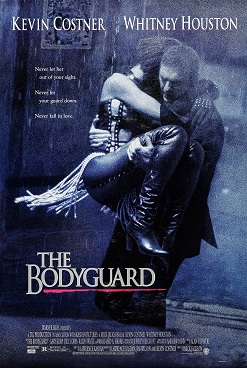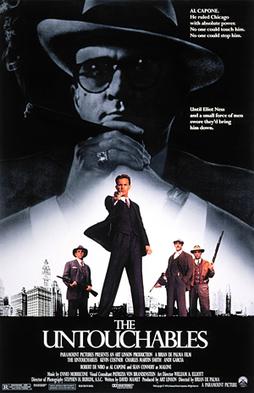
KEVIN COSTNER
THE AMERICAN CHARACTER FOR WHICH EVERYONE HOPES WILL PREVAIL
By PETER THOMAS BUSCH
America has endured through great struggles in part because of the character of the people.
That individual with a genuine good heart and spirit of adventure turned into a screen persona that could shape shift sure enough with the help of a bit of costume and a bit of set design and a bit of a location shoot.
Kevin Costner took on a gangster in Chicago, and tried to solve the plot behind the assassination of a President. In between assignments, Lieutenant John Dunbar sorted out the heroes from the villains in the Indian Wars.
Director Brian De Palma cast Costner as the legendary biopic character Eliot Ness in The Untouchables (1987). The treasury agent squared off against Prohibition Era gangster Al Capone who was operating illegal liquor sales in Chicago.
Costner’s feature film career received a mega boost with the role, as the lead character alongside supporting characters played by iconic actors, Sean Connery and Robert De Niro, in an ensemble cast that also includes Patricia Clarkson and Andy Garcia.
Alcohol consumption is illegal but the organized crime elements continue a black market trade importing whiskey and distributing alcohol to retailers.
Costner portrays Ness as genuinely wanting to enforce the law, even at risk to his own life, determined to perform his law enforcement duties properly despite the obvious corruption all around him.
The narrative twists and turns through a series of personal tragedies, with Costner’s performance triggering the appropriate emotional processes throughout the movie.
Ness has sweet, tranquil moments with his wife, played by Clarkson, and their young daughter, juxtaposed with violent personal encounters with Capone.
This heroic screen persona from 1930s Chicago transfers well into a courageous Lieutenant in the Union Army during the Civil War.
Costner directs and stars in Dances with Wolves (1990), a culturally sensitive film of epic sweep that won 7 Oscars, including Best Picture, Best Director and Best Cinematography.
Lieutenant John Dunbar is rewarded with a choice of next assignments after heroically ending a stalemate in a Civil War battle. Dunbar wants to experience the Western Frontier before the white settlements forever change the region.

The pace of the narrative continually stops and starts as the camera shows the three dimensional characters of the Western Frontier incrementally discovering the complex depth of each other.
Costner creates a culturally sensitive film that paints life along the Frontier for the white settlers and for the Indigenous populations living in parallel courses that intersect now and then, sometimes with positive results and sometimes with negative results.
This randomness of life is personified in the screen character who becomes more endearing as he works through his own emotional development. Dunbar genuinely wants to succeed on behalf of the Union Army, but his intentions in engaging with the Sioux tribe are misinterpreted, at great cost to the Lieutenant.
A more modern suit and eyeglasses provide the atmosphere for the independent investigation into the assassination of United States President John F. Kennedy in JFK (1991).
The three blockbuster films are released within four years of each other with Costner providing the lead role by maintaining the authentic American persona with minor adjustment to the character’s consciousness.
The screen characters appear similar enough in different eras of Americana, but each lead role has distinct motivations and intent imbued in every act committed and every word spoken.
Prosecutor Jim Garrison uncovers a series of eccentric characters connected to each other by newly discovered facts that suggest a more elaborate plot than the single gunman theory centered around Lee Harvey Oswald.
Director Oliver Stone creates a complicated narrative that weaves in and out of an ensemble cast that includes, Gary Oldman, Jack Lemmon and Walter Matthau, as well as Edward Asner, Vincent D’Onofrio, Sissy Spacek, Joe Pesci and Kevin Bacon.
Costner’s conspiracy theory character transforms into a private security officer for a celebrity diva in The Bodyguard (1992).
Whitney Houston plays Rachel Marron, a music icon receiving death threats by an unknown predator. Marron hires Frank Farmer as a bodyguard to protect her and find the stalker.
Costner must fold his screen character through a series of transformations, from a disinterested professional bodyguard to an impassioned defender of the vulnerable to becoming emotionally attached to the celebrity he is protecting.
Costner’s Hollywood star is not invincible, though.
The passive side of the three dimensional screen persona requires a deep interesting plot. Without the compulsion of movie magic, the character has difficulty compelling the narrative forward.
Costner quickly becomes a recurring name on the marque with 5 successful films in 5 years, including a slightly different spin to the character of lore, Robin Hood, in Robin Hood (1991).
Robin returns from fighting alongside the King of England in the Crusades only to find tyranny has swept the region around his family estate.
The audience is immediately made to side with Robin as a sympathetic character who escapes from a Jerusalem prison only to return home to find his father having been killed and his family estate taken by the corrupt Sheriff of Nottingham.
Robin is forced to find camaraderie with the other victims of the Sheriff living in Sherwood Forest.
Lawman Wyatt Earp is next. Costner puts on a gun belt and a cowboy hat to become the iconic biographical character keeping law and order in the Wild West in Wyatt Earp (1994).
But the Hollywood film career is not limited to portrayals of iconic characters. Costner also adds a bit of adjustments to the screen persona’s consciousness to play on the perimeter of morality as an escaped prisoner who is not all bad in A Perfect World (1993) and a widower who is not all that empathetic in Message in a Bottle (1999).
The screen persona does not have to always be the center of attention either. Costner continues to perform with the new generation of leading actors by providing supporting characters in biographical films, such as Hidden Figures (2016), Molly’s Game (2017), and in American fantasy films, such as Man of Steel (2013).
One of the appeals of the character is that the typical American heroism is quite often kept in check by the brutal realism of surviving life in circumstances fought over by numerous heroes and villains.
The widower spends the entire film trying to move on from the love he has lost in his deceased wife, but when he finally begins to turn away from the past, tragedy strikes again. The prosecutor becomes ridiculed. The crime fighter loses many close friends which all seems for not at the end.
This realistic emotional seesaw pulls at the heart strings all the more to produce emotive responses to images of the genuine American characters surviving each challenging day with honest, benevolent intent.

